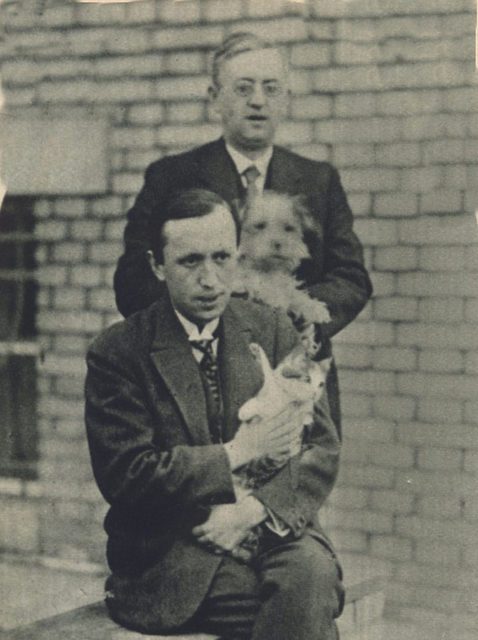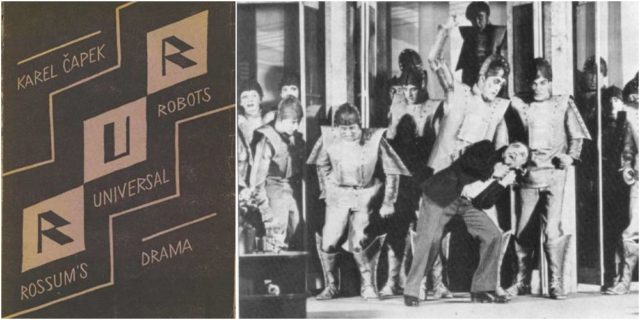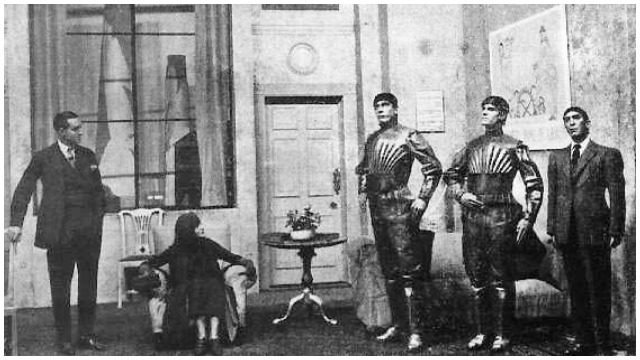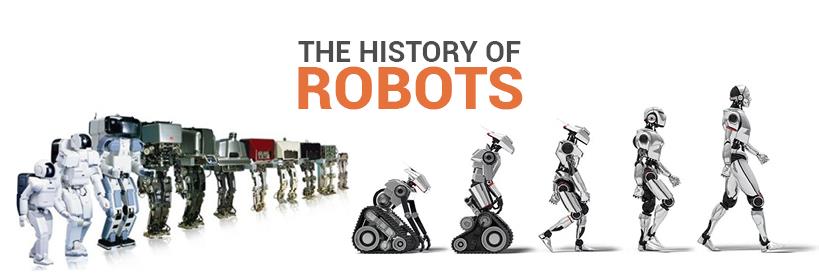1) Преобразуйте слово, написанное заглавными буквами, так, чтобы оно грамматически соответствовало содержанию текста.
A robot is a special kind of machine that follows the instructions coming from a computer. A robot ___ (NOT/MAKE) mistakes and it never gets tired.
2) Преобразуйте слово, написанное заглавными буквами, так, чтобы оно грамматически соответствовало содержанию текста.
Robots are all around ___ (WE). Robots make cars, explore dangerous places, clean things, answer telephone calls.
3) Преобразуйте слово, написанное заглавными буквами, так, чтобы оно грамматически соответствовало содержанию текста.
Some of them can even take care of ___ (CHILD) and elderly people.
4) Преобразуйте слово, написанное заглавными буквами, так, чтобы оно грамматически соответствовало содержанию текста.
If we didn’t have robots, our life ___ (BE) less comfortable and more dangerous.
5) Преобразуйте слово, написанное заглавными буквами, так, чтобы оно грамматически соответствовало содержанию текста.
According to the dictionary, the word ‘robot’ ___ (MEAN) ‘compulsory labour’.
6) Преобразуйте слово, написанное заглавными буквами, так, чтобы оно грамматически соответствовало содержанию текста.
The word ‘robot’ ___ (USE) for the first time in a science fiction play in 1920.
7) Преобразуйте слово, написанное заглавными буквами, так, чтобы оно грамматически соответствовало содержанию текста.
The robot from that play was a destructive machine that finally ___ (DESTROY) the human race.

However, in real life, robots are still obedient to people. As for robots, the most enthusiastic nation is the Japanese. By now they ___ (CREATE) a quarter of the world’s robots. And they have very ambitious plans for the future.
9) Преобразуйте слово, написанное заглавными буквами, так, чтобы оно грамматически соответствовало содержанию текста.
The Japanese engineers think that soon robots ___ (REPLACE) 3,5 million workers in their country.
10) Преобразуйте слово, написанное заглавными буквами, так, чтобы оно грамматически и лексически соответствовало содержанию текста.
Most graffiti street artists are anonymous. However there are some artists who have become globally ___ (FAME). Like the twin brothers from Brazil who call themselves Os Gemeos.
11) Преобразуйте слово, написанное заглавными буквами, так, чтобы оно грамматически и лексически соответствовало содержанию текста.
They paint everything from small images to huge, ___ (COLOUR) pictures of people on buildings.
12) Преобразуйте слово, написанное заглавными буквами, так, чтобы оно грамматически и лексически соответствовало содержанию текста.
Another celebrity among graffiti artists is Blek le Rat from Paris. He paints pictures of ___ (HOME) people.
13) Преобразуйте слово, написанное заглавными буквами, так, чтобы оно грамматически и лексически соответствовало содержанию текста.
In this way he hopes to encourage residents to think ___ (SERIOUS) about the problems of these people.
14) Преобразуйте слово, написанное заглавными буквами, так, чтобы оно грамматически и лексически соответствовало содержанию текста.
Another well-known artist is Faith 47 from Cape Town. She paints big bright pictures of people and animals. The works of this ___ (PAINT) can be found on pavements, empty factory buildings, and abandoned cars.
15) Преобразуйте слово, написанное заглавными буквами, так, чтобы оно грамматически и лексически соответствовало содержанию текста.
It is ___ (POSSIBLE) to predict how street art will develop in the future but we can be sure that it is here to stay!
К содержанию
Анатолий
Анатольевич
Eфремов
Раздел 3 — Языковой материал (задания по Грамматике и Лексике)
Прочитайте приведённый ниже текст. Преобразуйте слова, напечатанные заглавными буквами в конце строк, обозначенных номерами 18-26, так, чтобы они грамматически соответствовали содержанию текста. Заполните пропуски полученными словами. Каждый пропуск соответствует отдельному заданию 18-26.
| 18 | A robot is a special kind of machine that follows the instructions coming from a computer. A robot __________________ mistakes and it never gets tired. | NOT/MAKE |
| Ответ: | does not make / doesn’t make | |
| 19 | Robots are all around __________________. Robots make cars, explore dangerous places, clean things, answer telephone calls. | WE |
| Ответ: | us | |
| 20 | Some of them can even take care of __________________ and elderly people. | CHILD |
| Ответ: | children | |
| 21 | If we didn’t have robots, our life __________________ less comfortable and more dangerous. | BE |
| Ответ: | would be | |
| 22 | According to the dictionary, the word ‘robot’ __________________ ‘compulsory labour’. | MEAN |
| Ответ: | means | |
| 23 | The word ‘robot’ __________________ for the first time in a science fiction play in 1920. | USE |
| Ответ: | was used | |
| 24 | The robot from that play was a destructive machine that finally__________________ the human race. | DESTROY |
| Ответ: | destroyed | |
| 25 | However, in real life, robots are still obedient to people. As for robots, the most enthusiastic nation is the Japanese. By now they __________________ a quarter of the world’s robots. And they have very ambitious plans for the future. | CREATE |
| Ответ: | have created / ‘ve created | |
| 26 | The Japanese engineers think that soon robots __________________ 3,5 million workers in their country. | REPLACE |
| Ответ: | will replace |
7205A9
Прочитайте приведённый ниже текст. Преобразуйте слова, напечатанные заглавными буквами в конце строк, обозначенных номерами 27-32, так, чтобы они грамматически и лексически соответствовали содержанию текста. Заполните пропуски полученными словами. Каждый пропуск соответствует отдельному заданию 27-32.
| 27 | Most graffiti street artists are anonymous. However there are some artists who have become globally __________________. Like the twin brothers from Brazil who call themselves Os Gemeos. | FAME |
| Ответ: | famous | |
| 28 | They paint everything from small images to huge, __________________ pictures of people on buildings. | COLOUR |
| Ответ: | colourful | |
| 29 | Another celebrity among graffiti artists is Blek le Rat from Paris. He paints pictures of __________________ people. | HOME |
| Ответ: | homeless | |
| 30 | In this way he hopes to encourage residents to think __________________ about the problems of these people. | SERIOUS |
| Ответ: | seriously | |
| 31 | Another well-known artist is Faith 47 from Cape Town. She paints big bright pictures of people and animals. The works of this __________________ can be found on pavements, empty factory buildings, and abandoned cars. | PAINT |
| Ответ: | painter | |
| 32 | It is __________________ to predict how street art will develop in the future but we can be sure that it is here to stay! | POSSIBLE |
| Ответ: | impossible |
918CD5
What exactly is a robot? Is it a mechanical object specifically designed and pre-programmed to work for us … or in place of us?
In 1968, a sentient computer, brilliantly envisioned by Arthur C. Clarke and brought to the big screen by Stanley Kubrick, defied the “true nature” of HAL when it said, “I’m sorry, Dave, I’m afraid I can’t do that.“
The word robot nowadays is mostly used to describe a machine, a mechanical being designed and programmed to carry out a complex series of actions automatically. Generally speaking, that’s what a robot is. However, when we try to visualize a robot, the first thing that may pop into our head is an entity covered in metal, embellished with all sorts of flashy lights and buttons, and even a funny-sounding, grinding voice. They’re simple machines that iron our shirts or clean our house, for instance.
This is because those are the robots that feature as stock characters in science-fiction novels, films, and television shows.
Karel with his brother Josef Čapek behind him in 1927
The term “robot” was first used to depict a fictional humanoid in Czech writer Karel Čapek’s 1920 play R.U.R. While he did many different things throughout his career, Čapek is best known as a science fiction writer from a time before science fiction was a recognized genre.
A playwright, dramatist, publisher, essayist, photographer, literary reviewer, art critic, and a seven-time nominee for the Nobel Prize in Literature, Čapek is celebrated for his intelligent approach to various ethical subjects and his humorous way of writing about them.
Many of his works are centered on the industrial inventions that emerged in the first half of the 20th century. By exploring numerous aspects, he managed to raise serious questions about mass production, nuclear weapons, and artificial intelligence. His most fruitful years were during the First Republic of Czechoslovakia (1918–1938), after which he took an active part in the anti-fascist movement.
Čapek was a rational being above else, so his writings addressed concerns of social disasters, dictatorship, militarism, violence, and unlimited power of corporations. He highlighted human stupidity and greed as the irrational culprits for these social problems.
On the left is the cover of the first edition of R.U.R. (Rosumovi Univerzální Roboti), written by Karel Čapek in 1920, and on the right is a photograph from a 1922 production of the play in Prague.
In Čapek’s critically-acclaimed play R.U.R. (“Rossum’s Universal Robots,” or “Rossumovi Univerzální Roboti“), an industrial powerhouse uses a chemical substitute for protoplasm to manufacture living, simplified people called “robots.” The play premiered in Prague on Jan. 25, 1921, introducing the word robot to the English language. It was the first time in history that the word was used to describe purposefully engineered humanoids.
Built exactly like humans from flesh and blood, they were much closer to our modern idea of clones. They were specifically designed to fulfill human needs and perform tasks that people didn’t want to do, just as machines are built today to do the work instead of us. They were conscious, and seemed happy to work for their masters, at least for a while.
Although Čapek’s characters were not quite the same robots as we think of today, they represented a concept that eventually defined the meaning of the word.
A scene from “R.U.R.,” showing three of the robots
While writing, Čapek struggled to come up with a word that could fully represent them, so he initially settled for “laboři,” derived from the Latin word labor. His brother Josef advised him to use the word “roboti” instead, which gave rise to the English word robot. Roboti comes from the Old Church Slavonic word “rabota,” meaning servitude or forced labor, which in turn comes from “rabu,“ meaning slave.
The robots in “R.U.R.” were not mechanical, as we see in modern science fiction; they actually weren’t all that different from us. They were humans, biologically speaking, created to do work for the other “real” humans. Aside from being efficient, emotionless, inept at independent reasoning, and indifferent to self-preservation, they were more or less the same as humans. They could think for themselves, but not about themselves, which is where the line was drawn initially. However, at one point in the play, some of them began to be self-aware, saying no to their masters and eventually rising against their oppressor, killing every human being except for one.
So what makes a robot a “robot,” and a human a “human”? In 1920, Čapek in his play discussed the possibility that robots were simply humans designed to follow orders who would eventually become true humans. Decades later, in 1950, Alan Turing suggested a mathematical proof that computers would one day assume a kind of humanity, stating “when you were convinced you couldn’t tell the computer and human apart during a conversation, then the test would have been passed.”
Read another story from us: Before he began work on the Last Supper, Leonardo Da Vinci designed the first humanoid robot in Western civilization
Nowadays, aside from traditional physical robots, there are also software programs called bots, intelligently compiled to do the same tasks. So what if, when given an instruction, a robot simply says no to you.
Will it still be a robot?
«Fans of science fiction learned last week that the word ‘robot’ was first used in 1920 — a full three years earlier than originally thought,» according to a blog post at Archive.org.
They call it «a major SciFi discovery hiding in plain sight»:
The «massively important yet obvious» change in date was confirmed with a search of the Internet Archive, which has a digitized first edition of the Czech play, R.U.R. Rossum’s Universal Robots, published in 1920. There on the title page, hiding in plain sight in an English-language subtitle to the work, is the earliest known use of the word «robot.»
This important piece of information is one of many little-known facts captured in the Historical Dictionary of Science Fiction. The project was completed this year by historian Jesse Sheidlower, who credits two things that enabled him to publish this project, decades in the making. «One, we had a pandemic so I had a lot of enforced time at home that I could spend on it,» explained Sheidlower. «The second was the existence of the Internet Archive. Because it turns out the Internet Archive has the Pulp Magazine collection that holds almost all the science fiction pulps from this core period….»
The comprehensive online dictionary includes not only definitions, but also how nearly 1,800 sci-fi terms were first used, and their context over time…
The project began nearly twenty years ago at Oxford English Dictionary as the Science Fiction Citations Project.
The demand for robotics includes design, construction, operation, and, most importantly, robots’ use. The main objectives of robotics are represented by intelligent machines that can assist personage in their day to day lives and keep everyone safe and secure.
Robotics is a combination of computer science and engineering. The evolution of robotics can surrogate for humans and replicate human actions. The idea of generating machines that can operate autonomously dates back to classical times, but research into serviceability and potential uses of robots did not grow.
The history behind robots has its origins in the ancient world. The modern concept began to develop with the arrival of the industrial revolution, which permit the use of sophisticated machines.
Definitions of “robot.”
“A versatile, multiskilled, diverse, user-designed to move material, parts, tools, or any other specialized device through different programmed motions for the performance of a given task.”
“A machine that carries out a complex series of actions automatically.’’
Genesis of ‘’robot’’ and ‘’robotics.’’
The word robot was first used to denote a fictional humanoid in a Czech language play R.U.R.(Rossumovi Univerzalni Robotics-Rossum s Universal Robots) by Karel Capek, through it, was Karel’s brother Josef Capek. He was the word’s true inventor.
For many people, robots can be threatening set out that can give on to the end of the human race, either by outmaneuver or by outmuscling us and taking over the world or can make us utterly dependent on technology or can turn us as a human who is not actively doing anything except ordering a robot to do all of our work.
The exciting truth is that the first use of robots occurred in a play related to mechanical men that first constructed to work on factory assembly lines that fight against. The word robot was first used to denote an imaginary humanoid in the 1920 Czech language play his masters.
Asimov (Russian born American science fiction writer Isaac Asimov )first used the word ‘’robotics’’ in 1942 in his short story ‘’Runabout.’’ He suggested three ‘’Laws of Robotics’’ that are followed by robots and sci-fi robotic characters of his stories.
Law One
A robot can’t hurt human life
Law Two
A robot must follow his master except where such orders would dispute with the First law.
Law Three
Existence of his own can be protected by himself as long as
Beginning Of Robots
The history behind robots has its origins in the ancient world. Nearby 3000 B.C, there was the first case of the automatic device created to carry out a physical task. The human model is used to bash the hour bells by Egyptian water clocks.
A wooden pigeon that can make fly was invented by Archytas of Tarentum (creator of pulley and screw) around 400 B.C. During the second century B.C. in Hellenic Egypt hydraulically constructed human models that could speak, act, move and forecast.
A doll that can walk like a human being got attention around the first century A.D., which was invented by Petronius Arbiter. When we think about robots, we think about an intelligent machine that can act in our direction, control, administration, and what’s more good if it works on its own. The evolution of robotics reached a relative peak (before the 20th century)in the 1700s.
By knowing the history of the robots, it seems that these inventions have planted the first seeds of inspiration for modern robots. The research-based progress made in the 20th century in the robotics field surpassed earlier advancements a thousandfold.
In the 1950s, the first modern robots were invented by George C. Devol. He invented the modern robots that resulted in Unimate robots. But then he failed, and hence new inventions were made by a businessman later in the 1960s.
Ultimately, a more advanced and a new robot was invented in 1958 called Shakey. This robot was designed to care for the need for industrial applications. The robot has very clattering movements. This was all about the history of robots.
What’s Next?
Progressively advanced machines may already be with us, but for robots to be really useful, they will have to become more self–sufficient. It’s unfeasible to program a home robot to grip every object it might ever encounter. This is where AI (Artificial intelligence) comes in. The future of robotics is focusing on self-driving cars that will be trustworthy and sophisticated enough to be trusted by humans to be driven reliably.AI inside the car, never feel tired or be drunk.
Robotics engineers are planning to launch robots that look similar to humans. Their hair, the skin is inserted with sensors to react automatically to their environment. For example, a robot that can feel our touch and turn to hail us.
Ultrafine actions like eye movement, blink, chest movement that imitation breathing, etc. are going to make them unnoticed and help them to impart to non-verbal communication.
Different robots such as robotic pets, rescue robots, robotics insects, robotic prosthetics, walking robots, exoskeletons, and robot caregivers are also there with movement and adjusting themself to changing environments.
This, still, does not mean that life will soon be like ‘’The Jetsons.’’ As this is a technological era, many developments have done in the past, and the future of robotics is based upon utilizing artificial intelligence and automation to streamline processes currently handled with the help of or support of human workers significantly alter the job market.
This idea stands for disruptive innovation, a term that points out that emerging technology can utilize fewer resources, thus competing better against those without it. Robotics technology influences every aspect of work and home. Robotics has the future to transform lives and work practices, raise efficiency and safety levels, and provide enhanced service levels.
What Up Next?
Our society is experienced in numerous technological changes. The evolution of robotics, in just a couple of decades, have changed our life a lot. Robots are used in public security, education, robots at home, co-workers, autonomous cars, health care, entertainment, and robots will boost our standard of living.
Robots might take our job in logistics, office management, and transport are also at risk of being replaced. Driverless cars exceedingly replace cab drivers in the future; we like it or not, but that’s the bitter truth. But they create jobs, too. Artificial intelligence can replace tasks, not jobs. It will create a new market and jobs. We need additional education and training for those new jobs, but there will be opportunities.





